Bruce Dowbiggin
The Explosive Cost of Canada’s Civil Service Hiring Binge
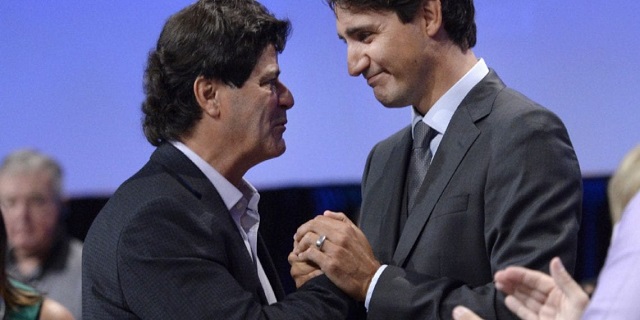
Most living in Canada would agree that a crumbling infrastructure and healthcare shortages could justify adding bodies to the public rolls. But a deep dive into those jobs extolled by the PM shows an explosion of new positions, not in public works or the military, but in the vanity areas of DEI, gender equality and climate change.
In the tsunami of miserable economic and political news generated by the Trudeau government the past decade, party flacks have always tried to point to job growth in the economy as a sign that they’re doing something right.
But if you look carefully at the numbers of full-time jobs “created”, it soon becomes apparent that most of the highly touted “new” jobs are public-service positions. At all three levels of government the number of workers in Canada’s public sector has soared in recent years, far outpacing the hiring in the private sector.
For example, the federal public service has grown by 38 per cent since Prime Minister Justin Trudeau came to power in 2015, according to MEI, a Montreal-based think tank. During the Covid years, nine out of every ten jobs created was in the public service.
Here was Trudeau in 2022 cheering on his aggressive hiring processes, which have also included a similar growth in the use of consultants. “Thanks to your hard work and the hard work of Canadians across the country, Canada’s unemployment rate is the lowest it’s been since the start of the pandemic. In fact, more than 154,000 jobs were created last month — and … in the COVID-19 Era, more than one million jobs have been recovered.”
Most living in Canada would agree that a crumbling infrastructure and healthcare shortages could justify adding bodies to the public rolls. But a deep dive into those jobs extolled by the PM shows an explosion of new positions, not in public works or the military, but in the vanity areas of DEI, gender equality and climate change.
With their generous pensions and benefits these new employees are an expensive drag on the public purse. In addition, except for the very top of the pay scale, government salaries are typically higher than those in the public sector. Trudeau and Chrystia Freeland give Canadians the impression that their massive hiring binge— paid for by increasing debt— means a healthy growing economy. But the money that is moved from the private economy to public economies chokes productivity and creates inflation.
As a result, Canada’s GDP is lowest in the leading Western nations while its borrowing now sits at an unsustainable $713 billion. Carrying the debt is expected to cost the federal treasury $60.7 billion in 2028-29, according to the government’s own economic statement.

No wonder economists warn that this growth of government jobs is not sustainable in the long run. “If you look at how the private sector’s trending, it’s sharply decelerating,” Beata Caranci, chief economist at Toronto-Dominion Bank,
As just one example of runaway government hiring, listen to Kareem Allam, former Vancouver city budget chief, who went on Vancouver’s CKNW recently to describe how runaway hiring has affected his city. “We had 1,200 city employees in 2008. We have about 9,000 now. There are 700 people in the city of Vancouver staff that work full-time on climate change. And (yet) our GHG emissions keep going up.”

While Americans are experiencing the same bloating of the civil service, Allam points out that they are more efficient than Canadians. “Dawn Pinnock is the head of the Civil Service in the city of New York. She’s their city manager. And not only is she responsible for being the city manager, she’s also got the same responsibility as (Vancouver’s) Translink, but in New York.
And it’s a city that has thirteen times the population of Greater Vancouver. Dawn makes US$ 240,000 a year. Our CEO of Translink, our CEO of Metro Vancouver, and our city manager combined make $1.4 million. The executive from New York doing the job of essentially three executives here in the lower mainland, and yet making a fraction of what they make here.”
Naturally these salaries have to come from somewhere. That somewhere is tax. “It is unbelievable the amount of money that is pouring into city hall and the lack of accountability we’re seeing around how that money was being spent,” says Allam. “When Gregor Robertson first got elected as mayor in 2003 the city budget was $894 million. It’s going to be well over $2.4 billion this year.
“That’s almost a tripling of our taxes. Is anyone in Vancouver thinking that we’ve gotten a triple in the benefit of services? Are potholes getting better?”
There are some exceptions to the bloating of the public service and its budgets. In Calgary, the multi-billion Green Line transit system has been chewing through hundreds of millions without any progress. The original estimate of track was shrinking with the southeast part of the plan mothballed. Now the unpopular Green Line has been stopped by the provincial UCP government of Danielle Smith.

Assessing the project as a “boondoggle” Transportation minister Devin Dreeshen said, “This is unacceptable and our government is unable to support or provide funding for this revised Green Line Stage 1 scope as presented in the city’s most recent business case… throwing good money after bad is simply not an option for our government.” Calgary’s progressive city council is seeking to find alternatives (they could always build a direct link to the airport) before they’re tossed out of office in the next municipal elections.
Would that Ontario and Toronto governments had paused before creating their Metrolinx Crosstown subway line, the 25-stop, 19-kilometre project. Work began in 2011 and Metrolinx previously announced completion dates of 2020 and 2021. Its budget has now soared to $13 billion with stories emerging of 260 cases of quality control issues still pending at the start if the summer.
One of Pierre Poilievre’s favourite attack lines against the federal Liberals has been getting control of spending, making government live within its means as taxpayers do. No one expects him to slay the dragon as Javier Milie has done in Argentina. But Canadians will be looking to him to at least change the Trudeau Spend, Spend, Spend philosophy before it ruins the nation.
Bruce Dowbiggin @dowbboy is the editor of Not The Public Broadcaster A two-time winner of the Gemini Award as Canada’s top television sports broadcaster, he’s a regular contributor to Sirius XM Canada Talks Ch. 167. His new book Deal With It: The Trades That Stunned The NHL And Changed hockey is now available on Amazon. Inexact Science: The Six Most Compelling Draft Years In NHL History, his previous book with his son Evan, was voted the seventh-best professional hockey book of all time by bookauthority.org . His 2004 book Money Players was voted sixth best on the same list, and is available via brucedowbigginbooks.ca.
2025 Federal Election
Trump Has Driven Canadians Crazy. This Is How Crazy.

“Liberalism is based on one central desire: to look cool in front of others in order to get love. Preaching tolerance makes you look cooler than saying something like, ‘Please lower my taxes.’”— Greg Gutfeld
Having lived 25 years in the West after 45+ years in the East we can now generalize on the state of the nation. In the West the attitude is to grasp the future. Not fear it. Accept risk and loss as partners. In the East the default sentiment is to fear the future. Think of every reason why it might fail.
Quebec fears losing its culture. Ontario fears losing its power. The Maritimes fear losing equalization money. Hence Danielle Smith and Doug Ford as contrasting symbols of leadership. But 2025 is something new.
Donald Trump’s unsparing assessments of modern Canada— “We don’t really want Canada to make cars for us, to put it bluntly. We want to make our own cars — and we’re now equipped to do that”— have exposed this fissure in the country. Is it him or is it us? Families and friendships are being destroyed by the response. As Canadians head to the polls it’s obvious that persuasion is not going to apply in this climate. Arguments are falling on deaf ears.
With a large segment of the population doubling down on a failed past it’s time to make an I-told-you list of the implications of letting Donald Trump scare you into voting for a re-run of the Liberal Party. Double this dread if the Liberals get a majority.
To those Boomers living off the equity in their paid-off homes, get ready to be taxed on the appreciation in your homes. While you cherish your stand-alone private residence, get ready for the neighbours to sell out to someone who will erect a six-storey, 36-unit condo on the property right next to you because “sustainable growth”.
Got someone under 50 in your life? The Carney Reflex is bad news. Adding debt and embracing the destructive Trudeau social positions is a killer for those looking to commit to a future in Canada. Should Poilievre lose the election and his seat expect a brain drain away from the failed state. And the prosperity they create to vacate as well.
To those who cherish free expression expect hate-speech laws like those in UK where police will arrest you in your homes for social-media comment hostile to the ruling Party. And even if you shut down your posts watch out for neighbours who will exploit snitch lines to get you out of the hood.

Buttressing the party line, Carney will restore CBC’s funding— and then some— to drown out any social media pointing out the indelicate facts about his Trudeau-sourced cabinet members. He’ll also keep propping up failing private media, preventing them from bankruptcy so long as they spew DEI 24/7/365.
For those who cried fake tears over the Rez school graves scandal, watch Liberals pass legislation that gives unelected leaders of indigenous communities veto power over development of Crown Lands. Expect the Liberals, trying to maintain the NDP vote they assumed this year, to resurrect the “genocide” label against Canadians and fly flags at half mast again.

If you hoped to get to the bottom of innumerable scandals on the Liberals watch— ranging from eco-theft to China infiltration— Carney will put the clamps on any inquiry. The steady stream of Canada’s wealth to third-world kleptocrats will become a flood.
To those who thought Mark Carney had cancelled the consumer carbon tax, prepare yourself to find out that he just reduced it and will come back full-throttle as soon as the Conservatives fire Pierre Poilievre. While Carney plays the Housing Saviour he will also use the Carbon Tax to make concrete and fertilizer way more expensive, thus boosting the cost of the 50,000 homes he will never build and farm land will go fallow.
With CPC out of the way, expect no significant moves to end Canada as the money laundering capital of the world, the global fentanyl hub, international home to organized crime heads and a reported 1 in 7,800 residents as members of organized crime.
Batten down the hatches as Carney’s Liberals use their mandate to maintain the immigration deluge, thereby destroying Canada’s support systems for health, infrastructure and burying western values.

Get set for all your fossil-fuelled vehicles and heating to be taxed into oblivion with the proceeds going to more bike lanes, clogged public transportation on unreliable electric vehicles. Expect listening to obnoxious Quebec politicians brag on their “clean” hydro power.
Speaking of vehicles, the Sheila Copps set mocked Poilievre’s vision of urban hell where cops tell you not to protect your goods in a home smash-and-grab or car-jacking. With police ceding the field to organized gangs it will be open season as courts and the Liberals abandon the middle class to obey DEI imperatives.
And most of all, welcome to a full-fledged constitutional crisis sparked by Alberta and Quebec that will make the 1980s federal/ provincial rumbles look like Sunday school. Both will seek referendums from their voters on sovereignty or some equivalent. As we suggested last month the best case could be the UK model of regional parliaments. Saskatchewan and Alberta could join with indigenous communities to demand a regional say on how their revenues are distributed. Expect purchased media to humble brag for the ruling Liberals.

The worst outcome of Carney as PM is Alberta gaining independence or, gasp, joining America. Because Quebec can never get a better deal outside Canada expect them to use any momentum on sovereignty to extort further concessions from what’s left of Canada.
But why believe us? According to the report released in early 2025 by Policy Horizons Canada — the Government of Canada’s in-house think tank— upward social mobility could become a relic of the past, with wealth and opportunity increasingly inherited rather than earned. Their scenario outlines a country where rising inequality, inaccessible housing, and a broken promise of meritocracy leave younger generations disillusioned, disconnected, and doubtful that effort alone can improve their lives.
So with scant days left in the campaign the problem for Conservatives is not that the Liberal base believes Carney and their heroes. They’ve seen enough to know Mr. Burns is a fraud. But with their #TDS the true believers will never admit to backing a lying, losing hype train. That would be like death to them. So they’re closing their eyes and hoping it will all be over soon and they can go back to Mr. Dressup. Just know their kids will never forgive them.
Bruce Dowbiggin @dowbboy is the editor of Not The Public Broadcaster A two-time winner of the Gemini Award as Canada’s top television sports broadcaster. His new book Deal With It: The Trades That Stunned The NHL And Changed Hockey is now available on Amazon. Inexact Science: The Six Most Compelling Draft Years In NHL History, his previous book with his son Evan, was voted the seventh-best professional hockey book of all time by bookauthority.org. You can see all his books at brucedowbigginbooks.ca.
2025 Federal Election
How Canada’s Mainstream Media Lost the Public Trust
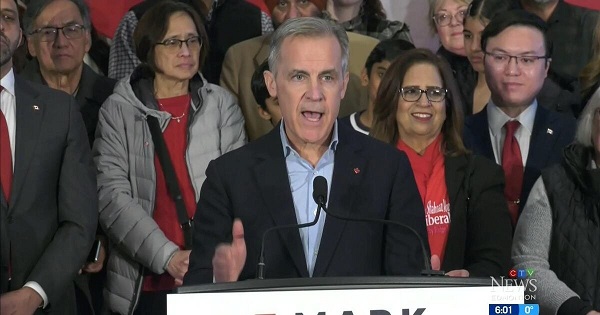
Breaking: CBC News admits that host Rosemary Barton was wrong on April 16 when she said “remains of indigenous children” have been discovered.
Call it the Panic Election. From The Handmaid’s Tale to Quebec alienation to plastic straws, the dynamic is citizens being stampeded in a brief six weeks by Big Brother. (There’s no Big Sister. That would mess with the narrative.) Prompting Covid Part Deux from the Laurentian media scolds.
Nowhere is this panic more keen than among aging Boomers who’ve pronounced themselves willing to ignore a decade of Justin Trudeau’s clumsy, unethical and sometimes criminal behaviour in the wake of Big Bad Trump. Even the threat of losing the country’s AAA credit rating can’t sway them from full-throated panic about being the 51st state.
The 51st state gambit is the window dressing. The real Trump panic is over him exposing the inadequacies of a Canadian society penetrated by China, dominated by globalist fanatics and more indebted every day. Specifically, Trump labelled Canadians defence dead-beats and entitled snobs who’d be crazy not to join the U.S. The insulting Trump framing has been a lifeline to those most recently in office— Liberals— to point at the Big Bad Wolf outside the door rather than the Frozen Venezuela inside its walls.
Integral to this panic is the role of Canada’s legacy media, a self-serving caste saved from bankruptcy (for now) by generous wads of public money. The 416/613 bubble ponies operate as if it were still 1985, not 2025. They’ve managed to preserve their status while society changed around them. For instance, CBC’s flagship At Issue panel features three people from Toronto and a fourth from Montreal.
It has worked perfectly in Boomer Canada. Until this past week, when the media guardians finally lost the plot. The combination of TV panel hubris and the incompetence of the Elections Commission exposed an industry more interesting in protecting its own turf than protecting the truth.
The meltdown was the notion that conservative social media— with its intrusive reporters and tabloid tactics— had no place in their sandbox. This hissy fit came after Wednesday’s French debate. Members of Rebel News, True North and other outfits dominated the party leaders’ scrums with obtrusive questions about Mark Carney’s opinions on same-sex sports and what constitutes a woman— questions the French moderator had neglected to ask.

For legacy reporters and hosts who take it as given that they be allowed the front pew this was an affront to their status. As purveyors of the one true political religion the talking heads on CBC, CTV and Global began speaking of “so-called journalists” and “far-right” intruders elbowing into their territory. Their resentment was all-consuming.
This resentment spilled into Debate Night Two when a shouting match ensued in the press room. A CBC source claimed (incorrectly) that Rebel Media leader Ezra Levant had been barred from the press room. A writer from the Hill Times screamed at members of their raucous rivals. The carefully chose panelists suggested that these outfits were funded by dark right-wing sources.
Before the debate had ended Elections Commission organizers— reportedly goaded by the Liberals— called off the post-debate scrum citing “safety” issues that seemingly included a Rebel reporter conducting a hostile walking interview with a furious Liberal official. This unleashed another torrent of Media Party vitriol about its position as the keepers of Canadian journalism.

In a show of irony, these complaints about right-wing misinformation came from people whose livelihood is dependent on Liberal slush funds or whose organizations have accepted government funds to stave off bankruptcy or whose union is an active shill for non-Conservative parties. The conflicts are never mentioned in the unctuous festival of privilege.
What makes this rearguard action against new media risible was the 2024 U.S. election where Donald Trump acknowledged the new day and rode the support of non-traditional media back to the presidency. His shunning of the legacy networks and hallowed print brands heralded a new reality in American elections. Poilievre has struggled to find this community in Canada, but for those with eyes it remains the future of disseminating political thought.
A perfect example of alternative media scooping the tenured mob on Parliament Hill has been the sterling work on China by Sam Cooper, a former Global employee who has independently demonstrated the ties between Chinese criminal gangs and the Canadian political structure going back to the 1980s. Working with others outside the grid he’s shown the scandal of a Liberal candidate urging Chinese Canadian voters to reap a bounty for turning his Conservative opponent to the Chinese Communist Party. A disgrace that Carney has forgiven.
Predictably Cooper’s work and the independent story by two retired RCMP investigators who implicated nine Liberal cabinet members in compliance with the Chinese communists has gotten the ‘tish-tish” from the Laurentian elites. Like the Democrats who buried the Hunter Biden laptop story to save his father in the dying days of the 2020 U.S. election the poodle media hope to delay the truths about China long enough to get the compliant Carney over the finish line.
For contrast to how it was— and could be— one only had to witness the moderator performance of journalist Steve Paikin of TVO. Largely unknown outside Ontario, Paikin overcame the skepticism of Westerners by playing it straight down the middle. Such was his honest-broker performance that Poilievre was heard telling him after the debate that he had no idea how Paikin might vote. (Ed. note: Paikin is a former colleague and longtime friend.) In other words, it’s still possible.
It’s a cliché that this election is a hinge point for Canada. Will it face itself in the mirror or indulge in more denialism about its true self? No wonder unaffiliated journalists joke that their stories today will be the lead on mainstream media in three months. Carney has promised to continue bribing the mainstream media, but their day is done. It’s simply a matter of fixing a date for the next panic.
Bruce Dowbiggin @dowbboy is the editor of Not The Public Broadcaster A two-time winner of the Gemini Award as Canada’s top television sports broadcaster. His new book Deal With It: The Trades That Stunned The NHL And Changed Hockey is now available on Amazon. Inexact Science: The Six Most Compelling Draft Years In NHL History, his previous book with his son Evan, was voted the seventh-best professional hockey book of all time by bookauthority.org. You can see all his books at brucedowbigginbooks.ca.
-
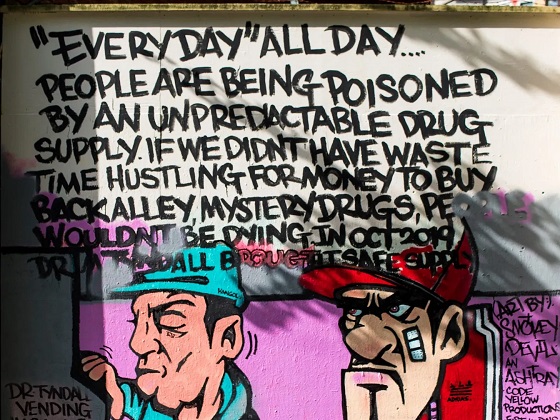
 2025 Federal Election2 days ago
2025 Federal Election2 days agoStudy links B.C.’s drug policies to more overdoses, but researchers urge caution
-
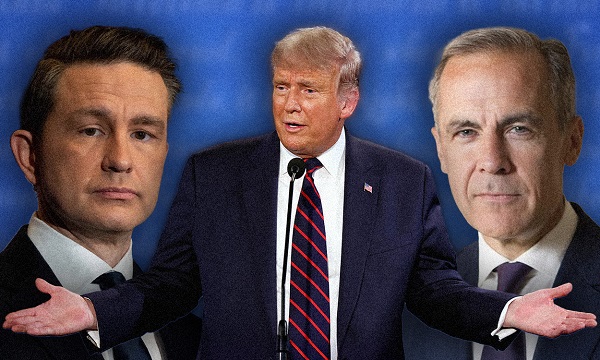
 2025 Federal Election2 days ago
2025 Federal Election2 days agoPolls say Canadians will give Trump what he wants, a Carney victory.
-

 2025 Federal Election2 days ago
2025 Federal Election2 days agoThe Anhui Convergence: Chinese United Front Network Surfaces in Australian and Canadian Elections
-

 conflict1 day ago
conflict1 day agoTrump tells Zelensky: Accept peace or risk ‘losing the whole country’
-

 2025 Federal Election1 day ago
2025 Federal Election1 day agoPoilievre Campaigning To Build A Canadian Economic Fortress
-

 Automotive1 day ago
Automotive1 day agoCanadians’ Interest in Buying an EV Falls for Third Year in a Row
-

 2025 Federal Election2 days ago
2025 Federal Election2 days agoTrump Has Driven Canadians Crazy. This Is How Crazy.
-
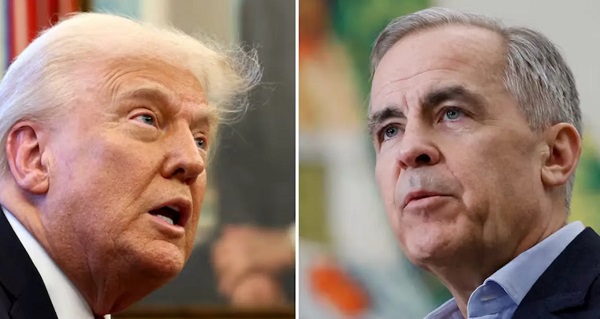
 2025 Federal Election2 days ago
2025 Federal Election2 days agoCarney Liberals pledge to follow ‘gender-based goals analysis’ in all government policy





